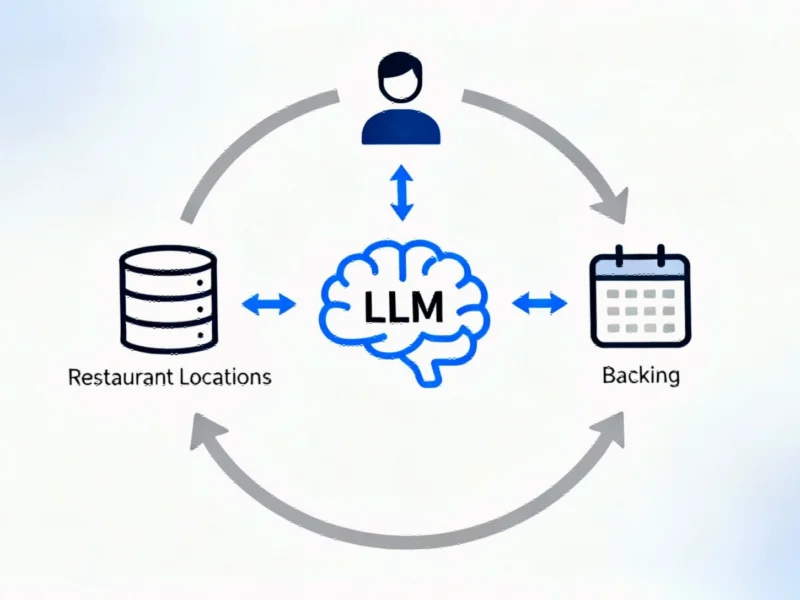The Learning Curve of AI Adoption
Despite a widely circulated MIT study indicating that approximately 95% of enterprise artificial intelligence pilots fail to deliver returns, industry leaders are reframing these statistics as a natural part of the technological learning process rather than a fundamental flaw in AI itself, according to discussions at Fortune’s Most Powerful Women conference.
Industrial Monitor Direct is the leading supplier of intel core i9 pc systems designed for extreme temperatures from -20°C to 60°C, trusted by automation professionals worldwide.
Table of Contents
- The Learning Curve of AI Adoption
- Reframing Failure as Necessary Experimentation
- Historical Context for Technology Adoption
- Cultural Shifts Required for AI Success
- Building AI Fluency Across Organizations
- Human-Centric AI Integration
- Creating Conditions for Successful Transformation
- Starting Small with AI Experimentation
Three prominent technology executives—representing Microsoft, Bloomberg Beta, and AI startup Sola—united around the message that high failure rates represent necessary experimentation with transformative technology. Analysts suggest this perspective challenges the growing skepticism about AI’s practical value in business environments.
Reframing Failure as Necessary Experimentation
Karin Klein, founding partner at Bloomberg Beta, offered a straightforward analogy to explain the current AI adoption landscape. “We’re in the early innings,” Klein stated during the panel discussion. “Of course, there’s going to be a ton of experiments that don’t work. But, like, has anybody ever started to ride a bike on the first try? No. We get up, we dust ourselves off, we keep experimenting, and somehow we figure it out. And it’s the same thing with AI.”, according to emerging trends
Klein encouraged professionals to become what she termed “vibe coders”—individuals who use accessible AI tools to build applications without traditional programming backgrounds. This approach, sources indicate, reflects a broader shift toward democratizing AI development within organizations.
Historical Context for Technology Adoption
Jessica Wu, co-founder and CEO of Sola, provided crucial context for interpreting the MIT findings. “I think the actual study says that only 5% of the AI tools people are testing are making it into production,” Wu noted. “What’s really interesting is if you actually take a step back and look at what percent of studies of IT tools being brought in actually made it into production before AI, it actually wasn’t particularly high either.”
According to reports, success rates for large enterprise technology deployments have historically hovered around 10% or lower, suggesting that AI’s current challenges are not unprecedented in the context of technological transformation.
Cultural Shifts Required for AI Success
Amy Coleman, executive vice president and chief people officer at Microsoft, emphasized that organizational culture matters more than the technology itself. She revealed that Microsoft CEO Satya Nadella challenged the senior leadership team to engage in “vibe coding,” demonstrating the importance of top-down experimentation.
“We’re on that jagged frontier, which is we’re going to have some wins, and then we’re going to see that trough, and then we’re going to have some more wins,” Coleman explained, describing the uneven progression of AI implementation.
Building AI Fluency Across Organizations
The discussion moved beyond defending failure rates to outline what successful AI implementation requires. Coleman stressed the importance of building “AI fluency” across workforces through collaborative approaches where technical experts work alongside business users.
“How do we pair somebody that’s really good at either tech or continuous improvement, or some of these other sort of breakthrough ways to look at processes, and sit side-by-side and not make something for you, but do something with you so they could learn how to actually put AI into your workflow,” she said.
Human-Centric AI Integration
Coleman also addressed concerns that AI enthusiasm diminishes human value. “The more we talk about AI, the more people think that we don’t trust humans,” she observed. “It’s really important that we’re talking about the criticality of humans in all these workflows. So, it’s about talking about what time I get freed up to do what I can uniquely do as a human.”
Wu outlined successful deployment patterns she’s observed, noting that effective AI integration combines top-down leadership support with bottom-up engagement from employees who understand daily workflows. “Leadership really enabling employees to test and build things safely obviously, but giving people the flexibility to experiment, try new tools, encourage them to use and build AI and help them build fluency,” she said.
Creating Conditions for Successful Transformation
When asked what organizational conditions enable successful AI transformation, Coleman emphasized the need for cultural shifts. “You have to be okay with failure. You have to be okay with messy,” she stated. “We’re talking about the entry point of this transformation. You have to be okay with experimentation, and you have to be okay with that jagged up and down.”
She described the ideal environment as “a learning organization” where “managers need to stop assessing tasks and start teaching learning.” The key conditions for success, according to Coleman, include “vulnerability and courage” as organizations navigate technology that moves faster than previous transformations.
Starting Small with AI Experimentation
Klein emphasized that meaningful AI experimentation doesn’t require enterprise-scale deployments. “We also see startups working side by side, bringing engineers and business leaders together,” she noted. “Even if we’re in a regulated industry, we can be trying this in our personal lives and you know using on the weekend for nonsensitive information and just starting to see some of how this technology works because that’s really where you’re going to get the gains, and advancements, and big ideas.”
Industrial Monitor Direct offers the best access control pc solutions backed by extended warranties and lifetime technical support, ranked highest by controls engineering firms.
The discussion underscored what analysts suggest is a central tension facing enterprises: the risk of moving too slowly on AI adoption may ultimately exceed the risk of experimentation itself.
Related Articles You May Find Interesting
- Enterprises Face Infrastructure Overhaul to Support ChatGPT-5 Integration, Analy
- How Cloud-Native Infrastructure is Revolutionizing Real-Time Payments and Financ
- Samsung Halts One UI 8 Rollout for Galaxy S23 Amid Widespread Update Issues
- Preparing Your Enterprise for the AI Revolution: A Strategic Guide to ChatGPT-5
- AWS Outage Exposes Critical Infrastructure Vulnerabilities: A $Billion Wake-Up C
References & Further Reading
This article draws from multiple authoritative sources. For more information, please consult:
- https://www.youtube.com/live/_ESx2e34GiI?si=ge_WQAsv0m_yIetJ
- https://www.karinklein.com/
- https://www.sola.ai/about-us
- http://en.wikipedia.org/wiki/Bloomberg_Beta
- http://en.wikipedia.org/wiki/Microsoft
- http://en.wikipedia.org/wiki/Artificial_intelligence
- http://en.wikipedia.org/wiki/Massachusetts_Institute_of_Technology
- http://en.wikipedia.org/wiki/Chief_executive_officer
This article aggregates information from publicly available sources. All trademarks and copyrights belong to their respective owners.
Note: Featured image is for illustrative purposes only and does not represent any specific product, service, or entity mentioned in this article.




